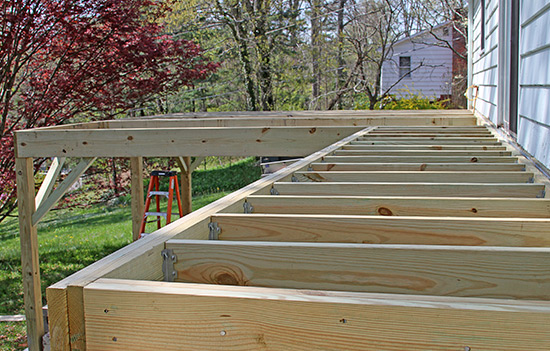How Much Homeowners Insurance Do I Need?

(DESCRIPTION)
An umbrella pops up from the bottom of the screen. Text, Homeowners Insurance. The text, home insurance, appears in a search bar.
(SPEECH)
[MUSIC PLAYING]
Home insurance, why do you need it?
(DESCRIPTION)
A mouse cursor hits search. A red house logo pops up in a box. The box is replaced by a shield outline and dollar signs surround it on both sides.
(SPEECH)
Your home is most likely your biggest investment. Your homeowner's insurance can provide financial protection in a number of ways, such as if your home or personal property are damaged, if you or a family member are held legally responsible for injuries to others or damage to their property.
(DESCRIPTION)
The home icon has a fire on the roof. Outlines of a family are replaced by a judge banging a gavel. The following images appear as the narrator reads the list of coverage. A hand signs a document and the house gets a check mark beside it, a hammer bangs on a nail, the house with the fire returns, a watch gets a check mark beside it, a dollar bill falls into an open hand, a T-shirt, couch, and TV appear, a garage gets a check mark, a fence breaks, a hospital gets a check mark beside it, a stack of dollar bills appears, a dolly carries boxes, a person gets a check mark beside them, a hand gets a cast, and a house breaks a window.
(SPEECH)
Most home policies include the following coverages-- dwelling coverage, to repair your home if it's damaged by a covered cause of loss, such as a fire; personal property coverage, to reimburse you for damaged or destroyed contents in your home, like clothing, furniture, and electronics; other structures coverage, for damages to detached structures like garages and fences; loss of use coverage, to pay for housing and living expenses if you have to move out of your home while it's being repaired as a result of a covered loss; and liability coverage, in case you are responsible for causing injuries to other people or causing damage to their property.
For more answers, go to travelers.com.
(DESCRIPTION)
Logo, Travelers, Text, travelers.com. Legal disclaimer: The information in this video is general in nature. Any description of coverage is necessarily simplified. whether a particular loss is covered depends on the specific facts and the provisions, exclusions, and limits of the actual policy. Nothing in this video alters the terms or conditions of any of our policies. You should read the policy for a complete description of coverage. Coverage options, limits, discounts, and deductibles are subject to state availability and to individuals meeting our underwriting criteria. Not all features available in all states. Insurance is underwritten by The Travelers Indemnity Company and its property causality affiliates., One Tower Square, Hartford, Connecticut. In California, Home insurance is underwritten by The Standard Fire Insurance Company, One Tower Square, Hartford, Connecticut 06183, Certificate of Authority number 3545, State of Domicile: Connecticut. In Texas and Washington home insurance is underwritten by Travelers Personal Insurance Company. All underwriting companies listed above are located at One Tower Square, Hartford, Connecticut 06183.
Copyright 2022 The Travelers Indemnity Company. All rights reserved. Travelers and the Travelers Umbrella logo are registered trademark of The Indemnity Company in the U.S. and other countries.
You're getting ready to buy a home and know that you'll need insurance to cover your house and all your belongings that go along with it. Knowing you have insurance coverage in case of theft, fire or other unexpected occurrences may help you sleep better at night. But how much insurance should you consider? Understanding the basic coverages and the ones you can add on to your policy can make it easier to determine what you need.
Here’s an overview of what’s typically included in a homeowners policy, as well as some other things to consider based on where you live and what you own.
The 6 basic coverages in a homeowners policy:
1. Dwelling
What it is: Pays to rebuild or repair your home if it is damaged by a covered loss, such as fire, windstorm, hail, lightning and vandalism.
How much you may need: Determined by the estimated cost to rebuild your house, not by the market value of your home. If you have a mortgage, your lender may even require certain dwelling coverage options, limits and deductibles.
2. Other structures
What it is: If you have a detached garage, shed or fence, these structures are covered by this portion of the policy.
How much you may need: Generally, most policies cover detached structures for about 10% of the amount of insurance you have on the structure of the house.1 Based on what other structures you have on your property, you may want to consider increasing this percentage.
3. Personal property
What it is: Personal property covers items like furniture, clothing and kitchen items – even your refrigerator – if they are damaged or destroyed by a covered loss.
How much you may need: It’s up to you to decide whether you want the actual cash value personal property coverage that is generally included in a homeowners policy or the optional replacement cost coverage. Both are subject to applicable policy limits and deductibles. Most home insurance companies will set your personal property limit between 50% to 70% of your dwelling coverage.2 You will need to determine the total value of your possessions to decide whether this default amount is appropriate for your needs. A great way to help more accurately estimate your personal property coverage needs would be to take an inventory of everything you own and assess the value.

Travelers is an insurance industry leader offering a wide variety of coverages designed to help protect homes, autos and businesses.
4. Loss of use
What it is: If you're not able to live in your home due to a covered loss, this part of the policy pays additional living expenses while your home is being restored.
How much you may need: Loss of use coverage is commonly based off of your dwelling coverage and calculated at about 20% to 30% of the dwelling coverage limit.
5. Personal liability
What it is: This helps protect you if you or members of your household are responsible for causing bodily injury or property damage to others.
How much you may need: Many homeowners insurance policies provide a minimum of $100,000 in personal liability coverage, meaning the insurance company can pay up to that amount in total to injured persons per occurrence. If you feel you need more protection, higher limits are available. You can also purchase an umbrella or excess liability policy if you think you need additional liability coverage. A suggested “rule of thumb” is that you should have enough liability insurance to cover the total value of your at-risk assets. Your vehicle, money in a bank account and some investments could all be at risk if someone sues you and you don't have sufficient insurance.
6. Medical payments
What it is: This helps pay medical bills for a visitor that is accidentally hurt while on your property. The insurance policy only pays up to the policy limits shown in your policy for covered claims. Your policy limits refer to the amount of homeowners insurance you buy and are typically found in the declarations page of your policy. If you incur damages that are higher than your policy limits, you are responsible for the remainder.
How much you may need: Many homeowners insurance policies provide a minimum amount of $1,000 coverage, per person. Higher amounts of coverage may also be available.
Here are a few typical types of add-on coverages to consider purchasing based on your individual needs:
- Additional replacement cost coverage: This coverage can make available an additional amount above your dwelling coverage limit to help repair or rebuild your home if the dwelling coverage on your home is not enough to cover the cost to repair or rebuild after a covered loss.
- Personal property coverage replacement: This provides coverage for personal property losses based on the cost to replace the item at the time of the loss, with no deduction for depreciation.
- Special personal property coverage: This coverage for personal property or contents can provide broader protection for your possessions in the event of a covered loss. It can cover your personal property in more situations than what is covered in the homeowners policy.
While homeowners insurance seems complex, it can be easier to digest when you break it down by coverage. Keep in mind that all homeowners policies aren’t identical. You'll want to understand what's covered in an insurance policy before you purchase it.
Learn more about Travelers homeowners insurance products, or if you’re ready to take the next step, click here to get a quote or find an agent.



